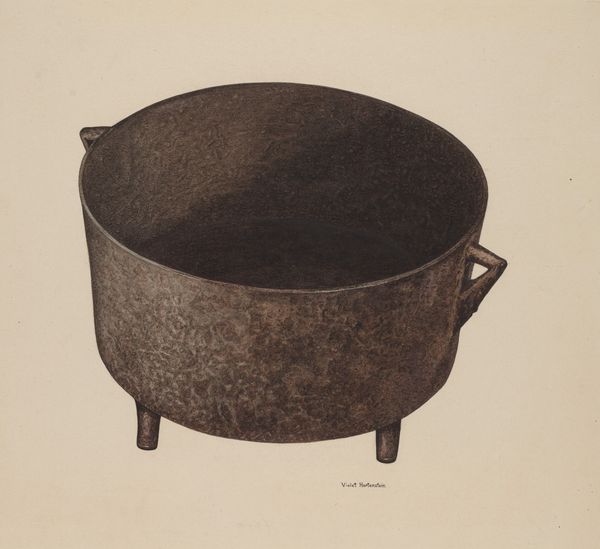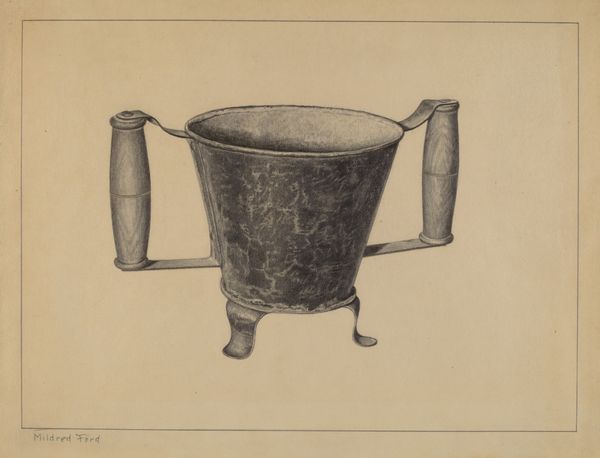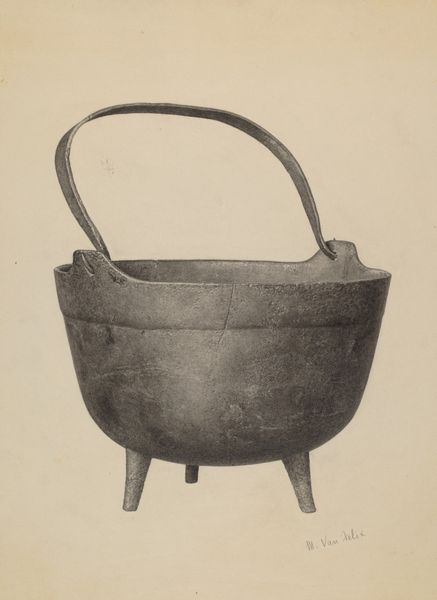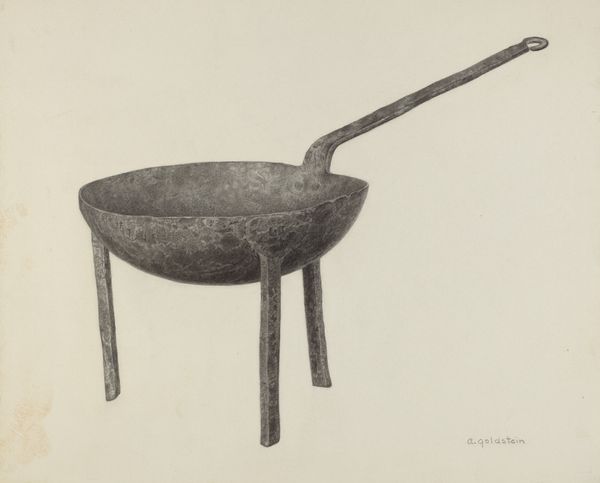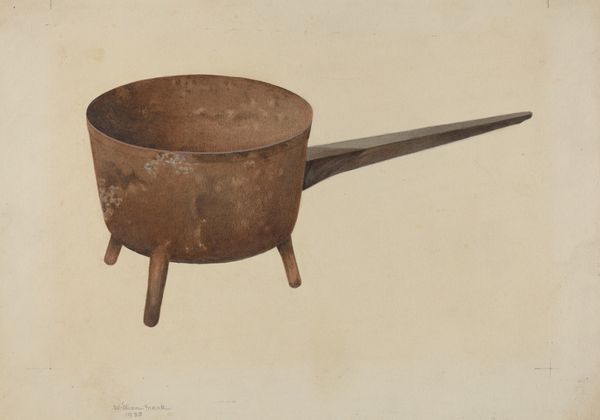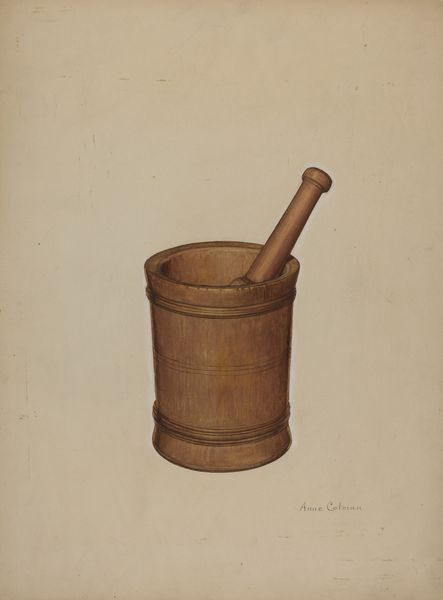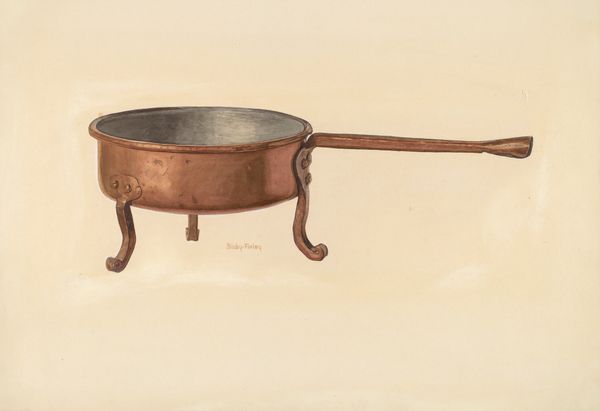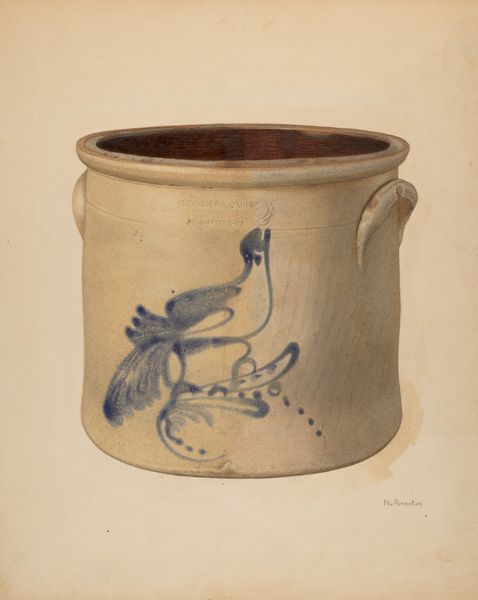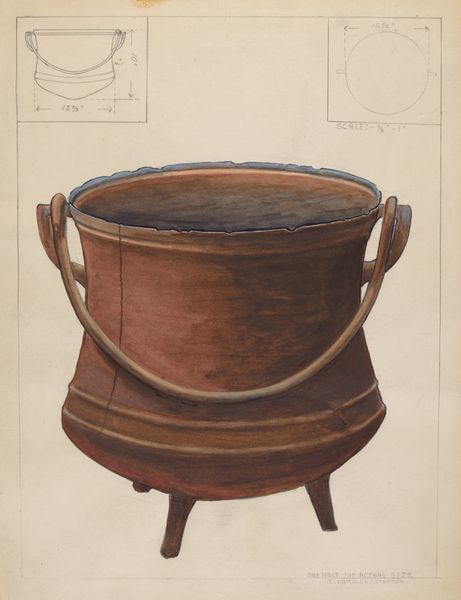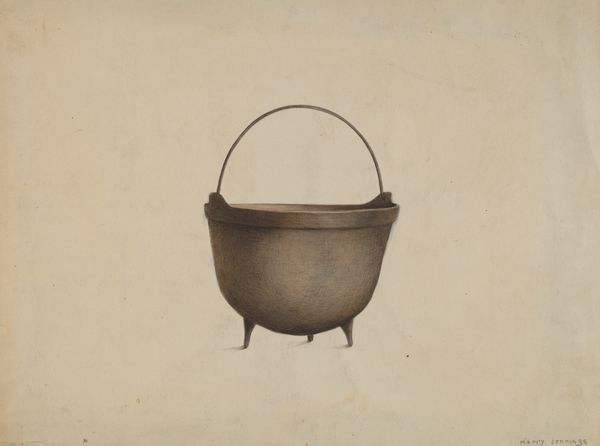
drawing, pencil, graphite
#
pencil drawn
#
drawing
#
charcoal drawing
#
pencil drawing
#
pencil
#
graphite
#
pencil work
#
realism
Dimensions: overall: 29.2 x 36.3 cm (11 1/2 x 14 5/16 in.)
Copyright: National Gallery of Art: CC0 1.0
Editor: This is Maurice Van Felix’s “Ember Carrier,” from around 1940, rendered in graphite and pencil. It's an interesting drawing – almost hyperrealistic. I'm curious, how do you interpret this seemingly simple object? Curator: The “Ember Carrier”, ostensibly a humble object, speaks volumes when we consider its cultural and historical context. During the early to mid-20th century, everyday objects, especially those connected to domestic labor, took on a renewed significance. Considering Van Felix's practice through a postcolonial lens, we can question what it meant to depict such an object with care and precision. How might the act of documenting it challenge or reinforce societal structures related to labor, race and class during this period? Editor: That’s fascinating, I hadn’t thought about the societal implications. Is there anything about the style of the drawing that might inform this interpretation? Curator: The very choice of realism, the meticulous rendering of textures and the play of light, invites us to consider this object not merely as functional, but as imbued with the labor and stories of those who used it. Is it romanticizing that labor, or simply recognizing its inherent dignity? The very absence of human presence shifts the focus to the silent testimony of the object itself. Where do you see that labor present in the drawing? Editor: In the worn texture of the metal, the slight asymmetry. It makes it feel… real. Curator: Exactly! This drawing prompts a critical reflection on how art can engage with everyday life. What could this image mean for people of color laboring during that time period? Editor: It makes me reconsider the power dynamics inherent in artistic representation. I initially saw a simple object, now I see a complex history. Curator: And that’s precisely the point: to never underestimate the potential for art to unveil deeper societal truths.
Comments
No comments
Be the first to comment and join the conversation on the ultimate creative platform.
